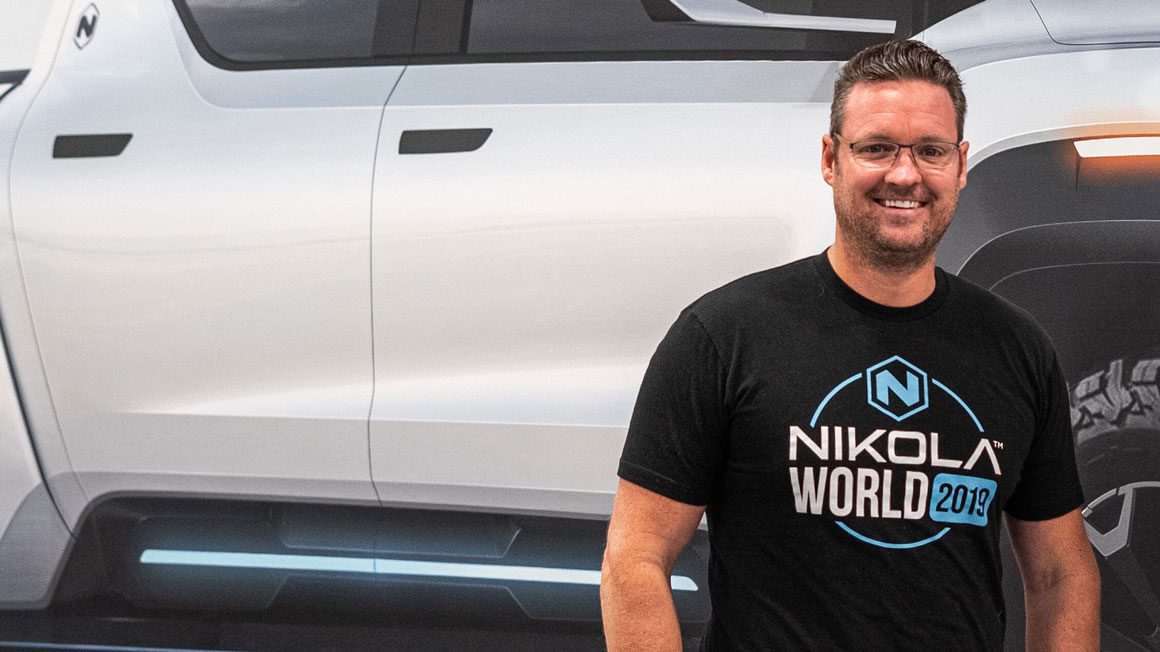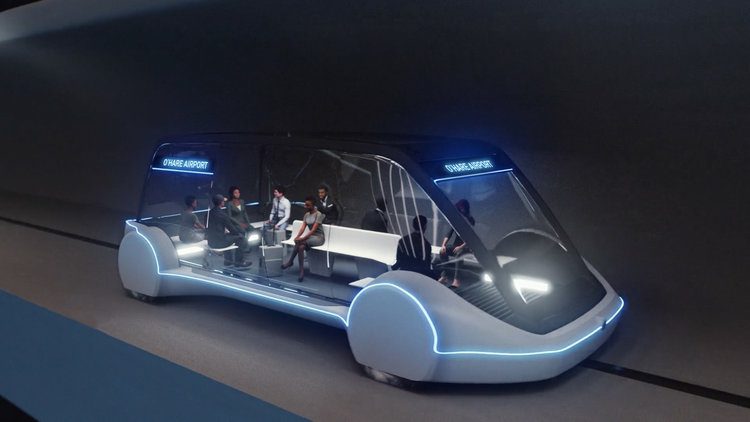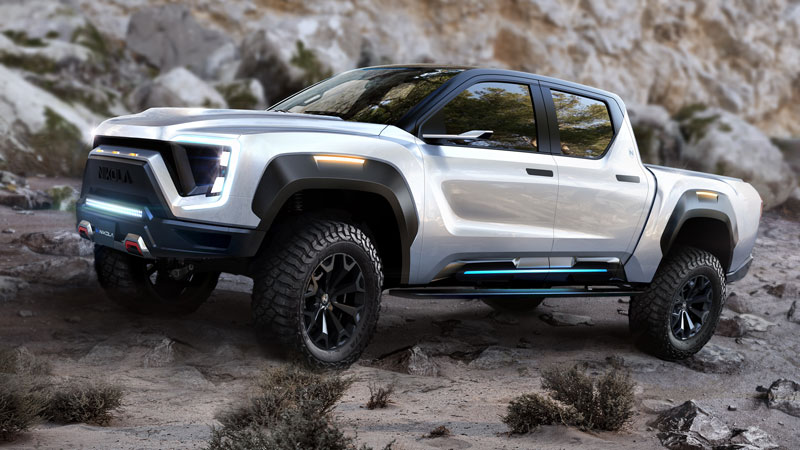Australia is to be one of the first markets for the hydrogen-powered Nikola Badger ute, with reservations to open on June 29, the company tweeted on Tuesday.
The news about the hotly anticipated electric utility truck (known as a ute in Australia and pickup in the US) followed closely on the heels of the company’s listing on the Nasdaq after a reverse merger with VectoIQ Acquisition Corp, and a surge in its market value to surpass that of legacy car makers Ford and FCA.
That achievement was loudly trumpeted on Twitter by Nikola founder and executive chair Trevor Milton and indicates the huge interest in Nikola, which seeks to disrupt the trucking industry with three hydrogen-fuelled trucks alongside the Badger electric ute.
In-day trading saw the company’s market cap eclipse $US30 billion ($A43.03 billion) on June 9, closing the day at a still healthy $US28.63 billion ($A41.06 billion), compared to Ford’s $US28.8 billion ($A41.31 billion) at market close the same day.
I've wanted to say this my whole adult life; $NKLA is now worth more than Ford and FCA. Nipping on the heels of GM. It may go up or down and that's life but I'll do my part to be the most accessible and direct executive on Twitter. Others will follow.
— Trevor Milton (@nikolatrevor) June 9, 2020
Founded in 2015, Nikola has to date gained most attention for its plan to introduce three hydrogen fuel cell electric (FCEVs) trucks that would compete with the Tesla Semi.
The Badger is the only utility truck to be offered by the company. With an expected production start in 2022, no pricing has been announced as yet for the Nikola Badger, which would compete against the Tesla Cybertruck, which is priced from $US39,900 in the US (no pricing for Australia has yet been announced for this either).
Milton told Techcrunch that Nikola also has the planned all-electric Ford F-150 in its sights – an even more tangible reason for being pleased about the company’s surge in value.
We open up reservations for the most bad ass zero emission truck on June 29th. See the @nikolamotor Badger in person at #nikolaworld2020 this year. You'll get to see a real operating truck, not a fake show truck. Expect stamped metal panels, functioning interior w/ hvac, 4×4, etc pic.twitter.com/SkY9zV0bbs
— Trevor Milton (@nikolatrevor) June 8, 2020
To power them, Nikola says on its website it will create a worldwide network of hydrogen stations, and that Australia is on the top of the list for markets when it first becomes available.
USA and Australia for now.
— Nikola Motor Company (@nikolamotor) June 8, 2020
How successful the Badger will prove to be will be dependent on a number of factors. Nikola says on its website that it will have a battery-only range of 480 kilometres, with an additional 480 kilometres using its 8kg capacity hydrogen fuel cells.
With a peak torque of 1,328Nm and the ability to tow 3.6 tonnes (more than the Cybertruck’s 3.4 tonnes), continuous power output of 339kW (455hp) and maximum power output at 675kW (906hp), it is certainly an attractive offering.

However, while hydrogen is touted by some (and refuted by others) as a realistic solution for long-haul trucking and shipping due to the ability to refuel very quickly as per a petrol and diesel vehicle, the investment in refuelling infrastructure is substantially more than required for electric vehicle fast chargers.
While this investment may make sense in terms of cargo logistics as fewer refuelling stations would be necessary, the same may not be said for the passenger vehicle market.
In Australia, a handful of trials, pilots and research are underway for hydrogen fuel cell vehicles. In 2019, the first public hydrogen refuelling station in Australia was launched and is being piloted by the ACT government, a research centre for FCEV trucks has been set up at Deakin University in Victoria, and Queensland announced a plan to add FCEVs to its Qfleet as part of a plan to lead on clean hydrogen.
Questions about how to best produce clean hydrogen from renewable energy resources hope to be addressed in a $70 million funding round issued by the Australian Renewable Energy Agency and (it says it has been overwhelmed by applications wanting a piece of the funding).
Questions also abound on whether Nikola’s surge will hold after the initial excitement, or will be subjected to an after-listing crash.
It certainly has a long way to go if it is to prove its worth in the long term, particularly against clean transport pioneer Tesla, stock values for which have been hovering just beneath $US1,000 ($A1,430) a share, bagging the EV maker a market cap of $US174.37 billion ($A250.1 billion) on June 9 close.
For its part, Tesla shares have bounced back after a dip seen across the board by the market as the planet shutdown amid the Covid-19 crisis.
While shares sat at just less than $US900 on Sunday, they have since surged again to a $US954.44 ($A1,368.96) high during trading on Tuesday after reports emerged that Tesla and CEO and co-founder Elon Musk’s other company, The Boring Company, are working on an all-electric 12-seater van.
According to the report from Mercury News, the 12-seater electric van would service an Ontario Loop Project proposed by The Boring Company, which local county officials have now voted to consider.


Bridie Schmidt is associate editor for The Driven, sister site of Renew Economy. She has been writing about electric vehicles since 2018, and has a keen interest in the role that zero-emissions transport has to play in sustainability. She has participated in podcasts such as Download This Show with Marc Fennell and Shirtloads of Science with Karl Kruszelnicki and is co-organiser of the Northern Rivers Electric Vehicle Forum. Bridie also owns a Tesla Model Y and has it available for hire on evee.com.au.

